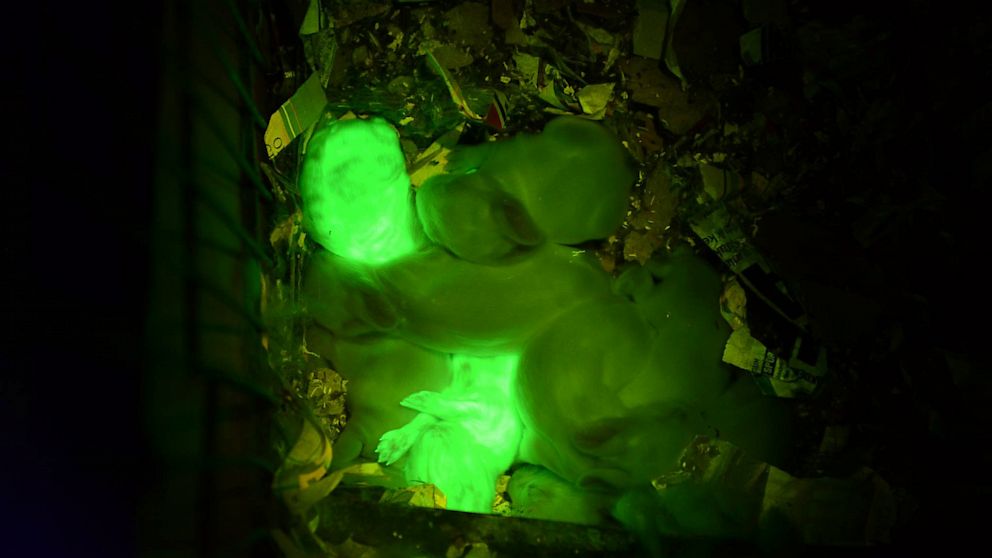Glow in the Dark Rabbits Could Fight Disease, Are Super Cute
Science Created Glow in the Dark Rabbits. We Ask Why?

Aug. 16, 2013— -- Are you wondering why the rabbits above are glowing? So are we.
Scientists at the University of Istanbul have successfully implanted jellyfish DNA into rabbit embryos, which has led to a litter of glowing green bunnies. Sure, the fluffballs are adorably cute and would be great accessories at Electric Zoo, but what the hell is the point?
“The overall goal is to introduce a beneficial gene into female rabbits, then to collect the protein made in the milk produced by the female rabbits. This approach could lead to new and competitively efficient ways to produce medicines,” said a spokesperson from the University of Hawaii where this technique is being practiced.
Sounds good when it is in medical speak but in reality, there have been minimal benefits so far from this type of DNA manipulation. Turkey might be high-fiving itself for managing to make glow in the dark bunnies, but many, MANY other animals have been turned green over the years with minimal benefit to the world. (PolicyMic has pictures of glowing monkeys, dogs, and sheep.)
The scientists seem to have good intentions, but the science is invasive and unkind, making animals glow with such a small payoff.
To date, there has been one medicine created from glow in the dark animals. In 2009, a protein extracted from a transgenic goat went into creating an FDA-approved drug, ATryn, that helps people suffering from a rare blood clotting disease.
So why do scientists keep doing this, considering the minimal payoff?
These are the three reasons we have come up with.
ONE: Making cells glow in this way is a pretty good marker for studying how tumors form and grow. As an assessment tool it has been used to study Alzheimer changes in the body, and also to look at how HIV/Aids develops in cat cells.
TWO: The use of colors makes it easy to know when you've successfully implanted the DNA transfer, as nothing says "this worked" better than a glowing monkey/cat/dog.
THREE: There’s no denying that glowing animals get attention. So underfunded scientists can use the "aww" factor in getting media attention that can help their projects flourish. This is even more relevant when you see how many transgenic companies have been shutting down its businesses.
For now, the rabbits might be cute to look at but they have no concrete benefit for society, and creating them "just because" seems cruel and a waste of resources.